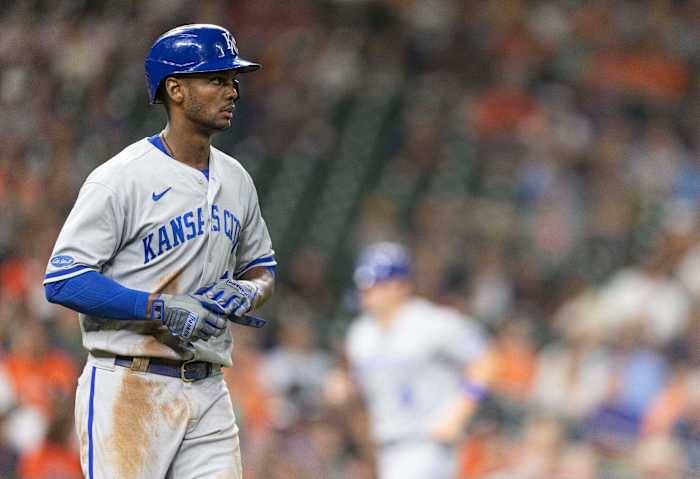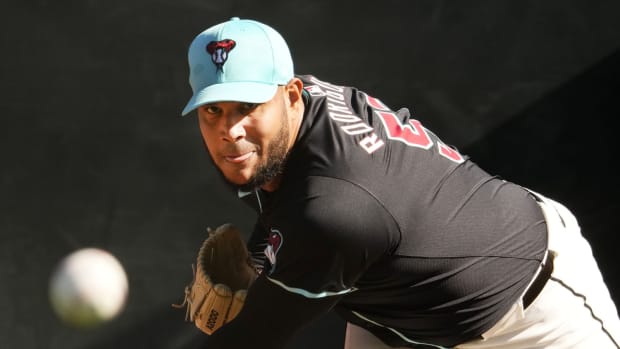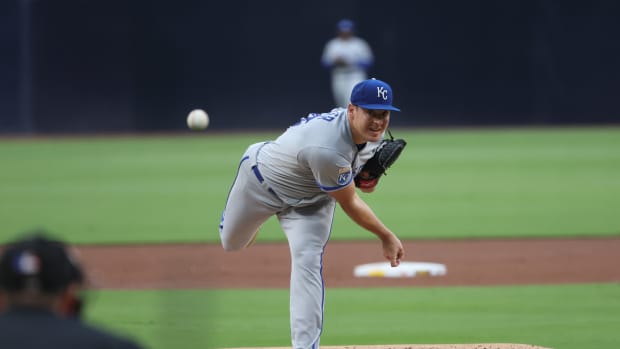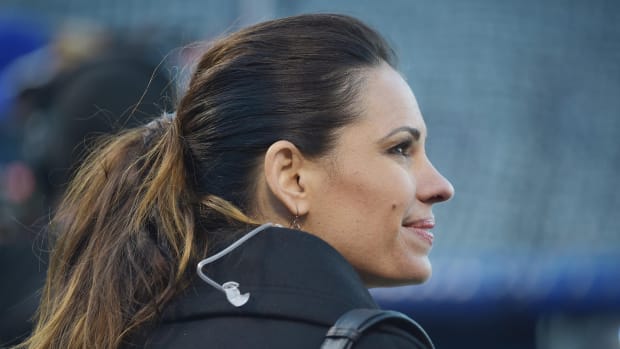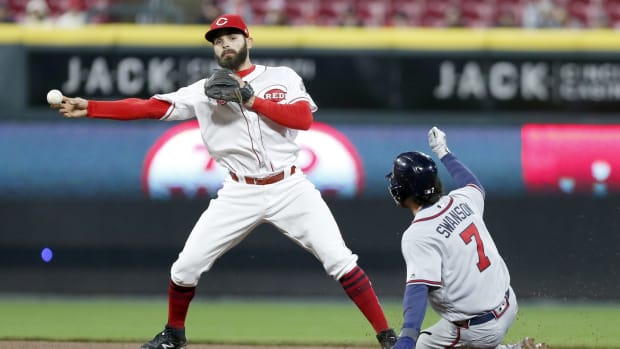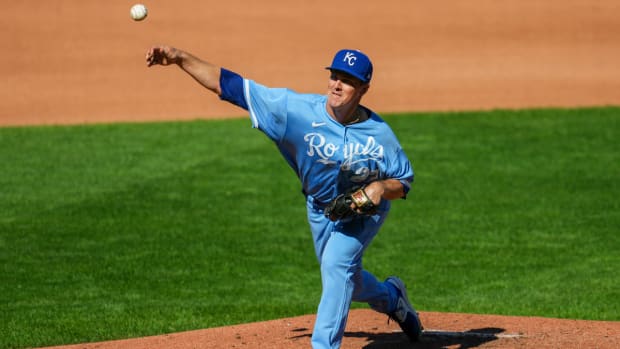Michael A. Taylor’s Isn’t an Everyday Starter for Royals in 2023
The Kansas City Royals are a team that's currently witnessing a youth movement but as the 2022 offseason gets into full swing soon, many are questioning the future role of one of their elder statesmen.
As of the publishing of this article, Kansas City has just three veteran players under contract for the 2023 season. All three of them are over the age of 30, and center fielder Michael A. Taylor is making the least amount of money of the group ($4.5 million) next season. Despite that, there's perhaps the most buzz about whether he belongs either in Kansas City's everyday lineup, on the roster, or both.
There was a chance that the Royals would trade Taylor at the MLB trade deadline this year but ultimately, the organization held on to the 31-year-old and continued playing him pretty frequently down the stretch. In all, his 2022 numbers were nothing to scoff at. He made year-over-year improvements in batting average, OBP, wRC+, walk rate and strikeout rate while also remaining a plus defender out in center field. From that perspective, it sounds silly to question whether Taylor should be played consistently in 2023. With that said, a closer look indicates that things aren't as peachy as they seem on the surface.
In 64 games before the All-Star break, Taylor slashed .264/.340/.385 with a .725 OPS and a 106 wRC+. In 60 games after the break, that line was .243/.283/.330 with a .613 OPS and 71 wRC+. Despite hitting the ball harder (34.2% vs. 30.3% HardHit%) and not striking out much more often (23.7% vs. 24.1%), his numbers declined pretty much all across the board from an on-base standpoint. He also collected four fewer extra-base hits after the break than before it and saw his ISO decline from .120 in Sample I to .087 in Sample II.
When comparing Taylor's numbers pre- vs. post-break, there were no discernible differences to notice in regards to his pitch types seen, their frequency or his hit directions on the field. Some glaring changes in his approach at the plate and subsequent data, however, told a disappointing story. Taylor went from walking 10.2% of the time in the first half of the season to just 5.0% in the second half, raised his swinging strike percentage from 13% to 15.7% and hit ground balls over eight percent more often. When combined with an O-Swing% of 39.4 compared to 31.0 and an O-Contact% of 58.5 compared to 52.8, it's easy to see why his overall numbers took a hit as a result.
Although he enjoyed a fruitful first half of the season by doing damage on pitches inside the zone and essentially turning his nose up when offered pitches outside the zone, Taylor reverted back to his old ways in half No. 2. As a result of him swinging more at outside pitches and making more contact on them, he hit into more outs and also hit more ground balls. His high BABIP from the first half (.336) also fell back down below his career average of .324, serving as one of the final nails in the coffin for Taylor's 2022 campaign.
When combining all of that with a decline in the outfield (16 Outs Above Average in 2021, 5 OAA in 2022), Taylor's value changes. Last season, he was a struggling bat that the bottom-shelf Royals could afford to have in their lineup every day because they didn't have anyone else to truly fill in that spot and Taylor was an all-world defender. For most of the first half of this season, Drew Waters wasn't in the picture and Taylor was offsetting his defensive decline by being a legitimately average-to-above-average offensive player. That was working.
In the second half of the season, Taylor came crashing back down to earth. He was a player of fourth outfielder quality and with Waters impressing in his debut with the team, there isn't any reason to trot out an over-30, limited-bat, less-than-elite defensive player as the organization's center fielder of the future. Taylor's affordable price tag makes him worth keeping around as a valuable reserve for a year, but it also makes him a potentially appealing trade chip should another club believe it can get him back to his early 2022 form. The Royals have ample reasons to go either route with Taylor, but one thing is clear: Taylor can't be an everyday player next season in Kansas City. It isn't good for anyone involved.

